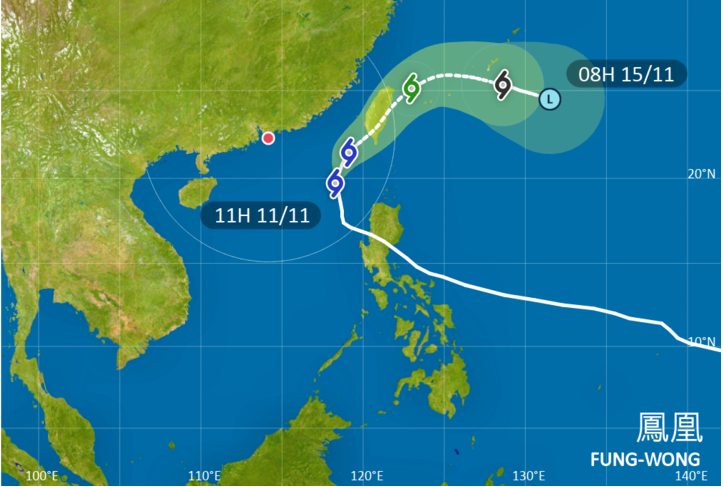
The Hong Kong Observatory said the No 1 typhoon warning signal will remain in force during the day on Tuesday as Tropical Cyclone Fung-wong weakened into a severe tropical storm.
The observatory said on Tuesday morning that Fung-wong continued to move northwards, edging closer to the coast of Guangdong, but the chance of issuing the Strong Wind Signal, No 3 is relatively low.
“Locally, there will be occasionally strong northerly winds offshore today, reaching gale force on high ground,” the observatory said.
“However, due to terrain sheltering effect, the chance of having persistent strong winds generally over the territory is relatively low.”
ALSO READ: Fung-wong: HKO raises T1 typhoon signal, to consider T3 later
At 4 pm, Fung-wong was estimated to be about 490 kilometers east-southeast of Hong Kong, with maximum sustained winds of 105 kph.
Weather in Hong Kong is expected to be mainly cloudy on Tuesday, with bright periods during the day and one or two light rain patches in the evening.
The observatory said the severe tropical storm is forecast to be closest to Hong Kong between late Tuesday and early Wednesday, skirting about 500 kilometers to the east of the city.
“Unless Fung-wong adopts a track closer to the coast of Guangdong, the chance of issuing the Strong Wind Signal, No 3 is relatively low,” the HKO said.
READ MORE: HKO: T1 on Monday as Fung-wong to skirt 400km east of HK
However, there will be swells and members of the public should stay away from the shoreline and avoid water sports, it added.
Fung-wong is expected to later move towards the vicinity of Taiwan region, departing from Hong Kong and weakening gradually.
“With Fung-wong departing, local weather will then be dominated by the northeast monsoon,” the observatory said, adding that it will then consider replacing T1 with the Strong Monsoon Signal, or canceling all tropical cyclone warning signals.


